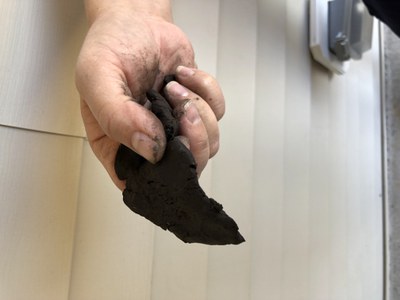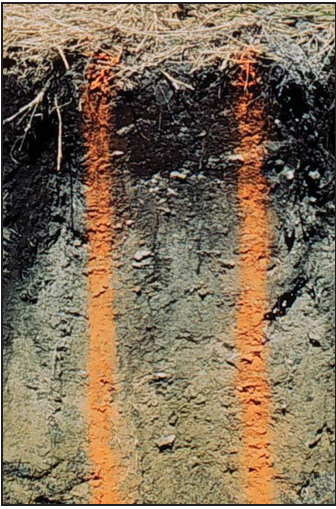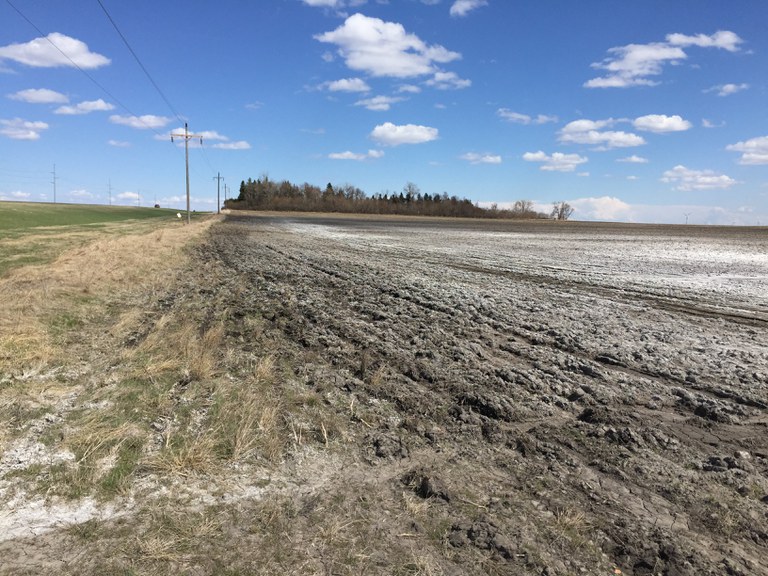Aeration – the process of using equipment to extract soil cores or to pierce the soil to allow more oxygen to enter the soil and carbon dioxide to exit, thereby enhancing root health
Bulk density – the weight of dry soil per unit of volume. Well-aerated soil has a relatively low bulk density; compacted soil has a high bulk density.
Permeability – the ability to allow water to move freely through soil
Porosity – the percent of soil volume devoted to pore space. Compacted soils have lower pore space and higher bulk density.
Texture – the percent of sand, silt and clay that makes up the mineral portion of soil. Texture can be estimated by feeling for sand grains between your fingers and by the ability to produce a clay ribbon between your thumb and index finger (Figure 1, Page 2). If necessary, texture can be measured accurately with a soil evaluation.
Fine textures – soil with more clay than sand or silt
Medium textures – soil with no dominance of sand, silt or clay
Coarse textures – soil with more sand than silt or clay
Water-holding capacity – the amount of water a soil can hold. Soil can hold two types: water that is loosely held and available to plants and water that is tightly held by soil particles and is unavailable for plant use. A silt loam has the most plant-available water but clay soil holds the most total water. Medium-textured soil holds more plant-available water than coarse-textured soil.
Determining clay content in soil via the ribbon test. The ribbon length indicates the soil is fine-textured.
While not a physical characteristic, the topography of the soil surface also will be an influence on water movement into the soil.
Soils in nature develop in layers, called horizons (Figure 2). The sum of horizons from top to bottom is called the soil profile.
A slice of soil showing the various layers or horizons that have been formed through time.
The uppermost layer of soil in most of North Dakota developed under prairie grasses and forbs, and tends to be dark colored due to the resulting organic matter accumulation. This layer is the most productive in the soil.
The organic matter and biological activity in the zone help soil particles clump together into aggregates.
These aggregates tend to resist compaction and contribute greatly to permeability, favorable bulk density and porosity. The surface layer, rich in organic matter, also is a storehouse of slow-release nutrients that are helpful for plant growth.
The underlying layers are not as productive as the surface layer due to lower organic matter content. Sometimes the subsurface layers have been altered with an accumulation of soluble salts and carbonates.
These accumulations generally are not desirable and may limit the cultivation of some types of plants.
With ornamentals, having a subsoil chemical analysis before selecting adapted species for planting is particularly important. Subsoils cannot be improved easily.


